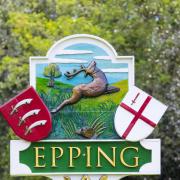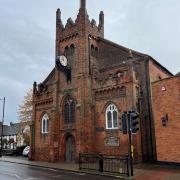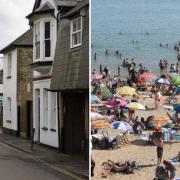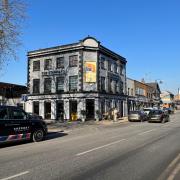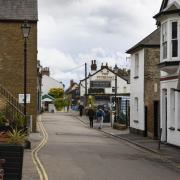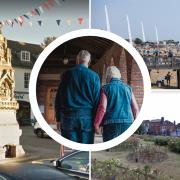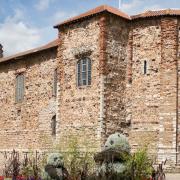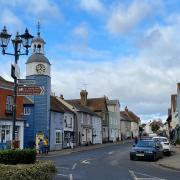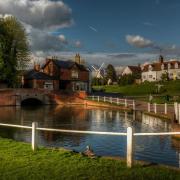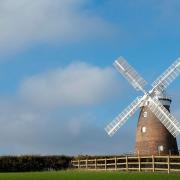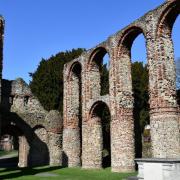Chelmsford and its surrounding countryside has plenty to offer its residents and visitors, but Hylands House and Park is among the city’s most treasured resources. Petra Hornsby finds out more
Hylands House is situated south west of Chelmsford and must be one of the council’s most successful projects. In 1964, shortly after the death of its last private owner, Christine Hanbury, Chelmsford City Council bought the estate, immediately opening the park for public use. Although the house itself gained Grade II listed status in 1967, restoration began around 20 years later with the final stage being completed in 2005. The park is a great space and asset to the community with many events taking place including, most notably, the popular V-Festival where top music acts perform to enthusiastic crowds.
The house has seen nine private owners since its initial commission by local lawyer Sir John Comyns and was originally a two-storey redbrick build, typical of the Queen Anne period. Sir John also started the ball rolling in organising the acres of parkland into a fairly formal arrangement, incorporating a pleasure garden and a small kitchen garden.
It was perhaps the fourth owner down the line, the more flamboyant and socially conscious Cornelius Kortright, a wealthy Danish merchant, who began to re-style Hylands in earnest. The house was extended and given a neo-classical make-over complete with white stucco, portico and ionic pillars. Kortright purchased an additional 150 acres of land and employed Humphry Repton, the much sought-after British landscape designer of the time, to add some romantic flavour to the park and to the house. An ice-house was built and the Serpentine Lake was created.
Another socially ambitious man, John Atwood, bought Hylands in 1839. The MP for Harwich was clearly keen to become a peer and he set about creating something perhaps a little more ostentatious, commensurate with his position in society. The house was further enlarged and decorated throughout and more land was bought. However, Atwood overstretched himself financially and, with substantial debts, was forced to sell the estate.
The 12th century saw considerable modernising with the installation of electricity and telephones courtesy of Sir Daniel Gooch. It was during his occupancy that Hylands was put to use as a hospital during World War I. Gooch saw to it that, at his own expense, the most modern medical equipment was in place. During the course of the war more than 1,500 soldiers were treated at the house.
World War II also saw Hylands playing its part. Its then owner, the widow Christine Hanbury, allowed the estate to become ? a site for a German Prisoner of War Camp and a wireless command post for the 6th Anti-Aircraft Division. Mrs Hanbury had not only lost her husband suddenly shortly after the purchase of Hylands but her only son, a pilot, also died during the war. The grieving wife and mother worked on the grounds, creating rhododendron borders and a private area in the gardens in memory of her husband and son.
In 1964, following the purchase of the estate by Chelmsford City Council, the house was gradually fully restored with funding from the Heritage Lottery Fund and, of course, Chelmsford City Council.
Today the manager of Hylands House and Estate is Ceri Lowen. Describing the restoration process, Ceri explains: ‘As far as possible, the building’s exterior was taken back to its Georgian, neo-classical roots. Internally, where viable, rooms have been taken back also to the early 1700s, but due to the changes made by later occupants, visitors will see some great examples of Victorian splendour.’
The Georgian entrance hall, the Grand Staircase, the Boudoir and the Blue Room are all highlights that reveal the characteristics of the time and the various preferences of the occupants. No wonder that this very elegant building that has doubled as the White House (in the film Chasing Liberty) makes for a very desirable venue for weddings, celebrations and corporate events.
Lottery funding has also helped restore the parkland and gardens in keeping with the plans of Humphry Repton.
The Pleasure Gardens, hidden within the park, are a real delight for the gardening enthusiast, representing a variety of ? planting themes from over the centuries.
Another part of the gardens worth visiting is the One World Garden which was created in 2007 in honour of the 21st World Scout Jamboree. Designed as a children’s garden, it features some fantastic planting, a carved totem pole and the Cob Nut Walk.
As a great centre of activity and offering four mapped walks, ranging from a 30-minute stroll to a four-mile ‘hike’, the park is a welcome space ideal for cyclists and home to an organised Nordic walking group and even a boot camp, for the committed exerciser.
Refreshments are available in the park at Mauro’s, situated next to the Adventure Castle Play Area, serving hot and cold drinks, baguettes and paninis, plus cakes and cookies. Well behaved dogs are welcomed on leads and the play area is ideal for young children of all abilities while there are appropriate changing facilities close by.
The re-furbished stable block is now a visitor centre and a hive of activity throughout the year. As well as being the home for three resident artists, it runs various craft workshops from batik to enamelling and from flower arranging to jewellery making. The artists’ studios are open each Sunday and Monday and artists’ works can be viewed and purchased. The Huttons Courtyard Café situated in the Stable Block is licensed and serves hot and cold food, cream teas and offers a children’s menu. The patio area is also dog friendly.
There are plenty of major events coming up at Hylands in 2015, but just on its own the park and gardens make for great visit, as Ceri explains: ‘The whole family will enjoy the wonderful facilities on offer here. We have picnic facilities and play areas, the car-park is free, and the park and gardens are free. It is an amazing resource and on so many people’s doorstep.’
Visiting Hylands House
Hylands House will be closed on Sundays until the end of March and will re-open on Sunday, April 6 and Monday, April 7. The park and gardens are open every day from 7.30am, but please refer to the website www.chelmsford.gov.uk/hylands-park for closing times and for more information on workshops and courses.
Events at Hylands Park
June 30, July 1 and 2: 3foot People Festival, ideal for pre-school children
July 4: Fling Festival, encompassing the arts
August 22 & 23: V Festival, celebrating 20 years




